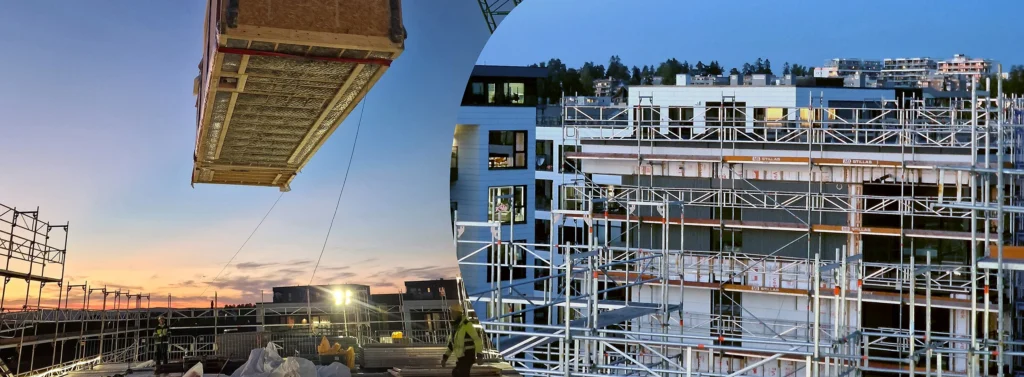Over the past few months, I’ve been talking to my clients and other construction professionals about a recurring topic: What are the most common mistakes subcontractors make, and how can you recognize a good one? The goal isn’t to generalize or put all subcontractors into the same category. There are many highly professional subcontractors, but overall, the average quality could definitely be better.
Anyone who has been in the construction industry long enough has at least a few colorful stories about subcontractors finding creative ways to shift blame. Some situations are so absurd that if you hadn’t seen them yourself, you’d think they were made up. In short, the biggest issue is a lack of accountability and failure to deliver on promises. The excuses and chain of problems can sometimes stretch longer than a Monday morning traffic jam, and the variation in skills, attitudes, and worldviews among workers is as chaotic as a busy flea market on a Saturday morning. One day materials are missing, the next day the hammer’s nowhere to be found – the comedy never ends.
A client once told me about a subcontractor whose worker was turned back at the border because he was a wanted criminal. Another case involved a dispute where one worker ended up stabbing another. These are extreme and rare cases, but they do highlight some of the risks. Then there’s the endless subcontracting chain – one subcontractor hiring another, who hires yet another, and before you know it, no one on-site actually knows who they work for.
Typical mistakes subcontractors make
Throughout these conversations, some key recurring issues have stood out as major headaches for general contractors. In short, the biggest problem is a lack of accountability and failure to follow through on commitments.
Issues often start right at the contract stage – subcontractors sign agreements without reading them and then try to renegotiate terms mid-project. It’s not uncommon for them to suddenly ask for an advance, claiming they need funds for materials or wages. When reminded that payment terms are clearly outlined in the contract, the usual response is, “I didn’t have time to read it.”
While we’ve mostly moved past the days of workers showing up in ripped sweatpants and sneakers, basic communication skills and consideration for others still leave much to be desired. Many subcontractors fail to properly vet their workers before sending them to a site. Poor quality work and project delays are almost guaranteed when subcontractors outsource to even more subcontractors, as this reduces control and oversight.
When problems arise, subcontractors often look for excuses rather than solutions. They shift blame, cover up mistakes, and fail to notify others of delays in time. Calls and emails go unanswered, meetings are missed (or they show up late). If a subcontractor doesn’t start on time and causes delays, it creates a snowball effect that disrupts the entire project timeline. The next contractor in line has already scheduled their work and may either walk away or demand additional payment for the inconvenience. One missed deadline can jeopardize the entire project.
Even financial penalties for poor work or safety violations don’t always help, as subcontractors may simply walk away from the job, causing even more disruption. And let’s not even get started on the post-construction warranty period – by the time issues arise, some subcontractors have shut down or changed names, leaving general contractors to hire someone else to fix the problems. Again, the blame game continues, and accountability disappears.
Why do these problems happen?
It all comes down to the ability (or inability) to recruit and retain skilled workers. If a subcontractor has a competent, professional workforce, minor management flaws, financial hiccups, or occasional tardiness might be overlooked. A general contractor may sometimes even take over some of the on-site managerial burden from the subcontractor.
A common path to becoming a subcontractor is working in a senior role for an employer and then deciding to start a business. This is great in principle – it fosters competition and innovation. But too often, the motivation stops at maximizing personal profits. We all know the type: the subcontractor driving a flashy BMW SUV but mysteriously unable to pay their workers.
Another major issue is the Jack-of-all-trades syndrome – taking on too many projects at once, hoping multiple income streams will lead to unlimited wealth. Instead, what usually follows is chaos, stress, financial trouble, and strained relationships. Delegation is either avoided or mishandled, leading to micromanagement. One of the best safety nets for any business is having a strong enough team to keep things running even if the manager is temporarily unavailable.
Poor communication is another common issue. Many subcontractors don’t fully understand the expectations of the general contractor – simply because they never ask. The solution? It’s surprisingly simple: ask. If something isn’t clear, clarify. Be proactive, anticipate issues, and offer solutions before problems escalate. Many subcontractors fail to see the bigger picture, unaware that their sloppy work can set off a chain reaction that disrupts the entire project.
So, what makes a good subcontractor?
The answer is simple – do the opposite of everything mentioned above. Honor commitments, manage finances responsibly, and employ professional workers. It’s not rocket science, yet truly great subcontractors are surprisingly rare.
A good subcontractor has industry experience and a strong work ethic. They take responsibility, fix mistakes promptly, and rely on their own workforce instead of outsourcing excessively. They review contracts carefully, ask relevant questions, and flag potential construction issues before they escalate. They are team players who focus on solutions rather than excuses.

I’m always amazed at how some people fail to grasp a simple truth: How you do anything is how you do everything. Sloppiness, deception, and irresponsibility always stand out – no excuse can hide the fact that you didn’t do your part. The same applies in reverse – genuine professionalism, organization, and reliability are just as obvious.
When times are good, work is plentiful, but when the market tightens, clients become selective. The best subcontractors always get priority – they have steady work, can charge higher rates, and enjoy a better professional life overall.
Conclusion
The mistakes subcontractors make are often simple and avoidable. You don’t need to jump through flaming hoops or balance on a ball while juggling glass marbles. Just get the basics right, and you’ll already be in the top 10–20% of subcontractors.
Of course, there’s a catch – anyone can perform well in the short term, but long-term success comes down to consistency. Every decision, big or small, is an opportunity to choose whether to be a good or bad contractor. The real challenge is maintaining high standards over time, honoring commitments, and building strong professional relationships.
Construction is an endless cycle of problem-solving, so it’s only fitting to end with an old saying: Luck is when one problem is solved, and the next one hasn’t started yet. Unfortunately, in construction, true happiness often only comes when the project is completed – if at all.
Wishing you successful projects!







